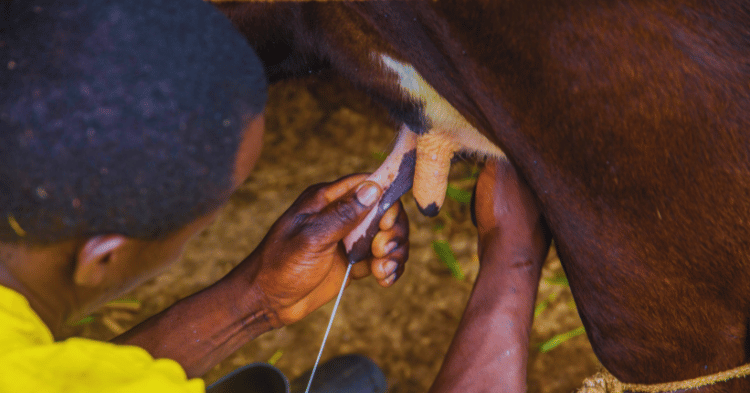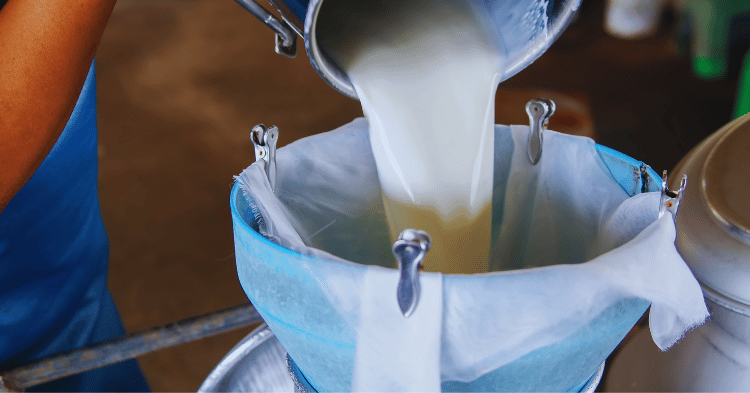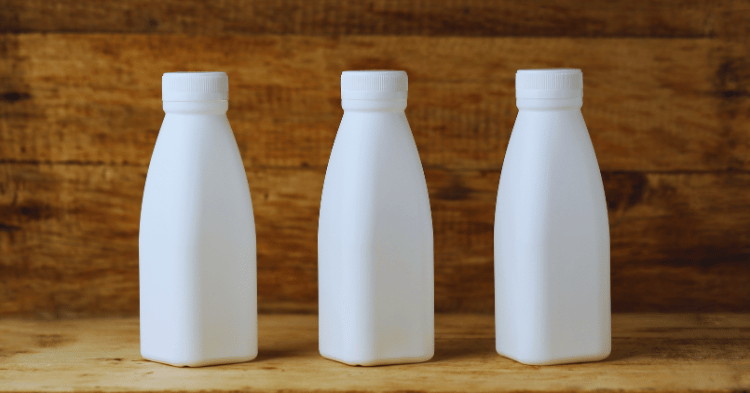Have you ever wondered, do horse produce milk, and if so, what makes it so unique? While the concept of lactation is familiar in many mammals, the thought of a horse nursing its foal often slips under the radar. Yet, it’s an intricate and fascinating process. Imagine a mare gently nurturing her offspring, producing a nutrient-rich, life-sustaining liquid designed perfectly for the foal’s rapid growth and development.
But here’s the twist: horse milk isn’t just for foals—it has captured human interest too, with its surprisingly delicate composition and potential health benefits. That said, not all is straightforward. How much milk do horses produce?
What triggers their lactation, and why isn’t it as common as cow or goat milk in our diets? These are the questions we’ll unravel as we dive into the lesser-known world of equine lactation. Buckle up; it’s a journey into nature’s rarest secrets!
Understanding Horse Milk

Knowing the nutritional benefits and properties of horse milk (Mare Milk) can be beneficial for horse owners curious about whether horses can produce milk and its potential uses.
Composition of Horse Milk
Horse milk stands out due to its unique composition when compared to other types of milk. Mare’s milk has a higher ratio of whey protein to casein compared to cow’s milk, but a lower ratio in contrast to human milk (Journal of Dairy Science). This distinct protein content aids in digestion and offers several health benefits.
| Component | Horse Milk | Cow’s Milk | Human Milk |
|---|---|---|---|
| Whey Protein (g/100ml) | 0.8 | 0.6 | 0.9 |
| Casein (g/100ml) | 0.3 | 2.8 | 0.4 |
| Fat (g/100ml) | 1.5 | 3.5 | 4.0 |
| Lactose (g/100ml) | 6.7 | 4.8 | 7.0 |
Benefits of Mare Milk
Mare milk, obtained from female horses, is considered a highly nutritious and beneficial beverage. According to VeryRareOnline, this milk is considered healthier when the horses consume fermented dairy products like Kumis.
Nutritional and Health Benefits
Nutritional Content: Mare milk provides the highest nutritional value among various types of milk, supporting the growth and development of foals (Source). It transitions from colostrum to mature milk over several weeks, ensuring the foal receives necessary antibodies and nutrients.
Health Benefits: This milk is known for helping individuals combat age-related ailments and sickness, making it a sought-after product. Its rich nutrient profile aids in improving digestion and overall health.
Dependable and Hygienic: The production of horse milk adheres to high hygiene standards, offering world-class milk products for consumption. This ensures that the milk is safe and beneficial for human intake, further emphasizing its numerous health benefits.
For more comprehensive insights into mare milk and its applications, you can explore our articles on related topics like can horses drink milk and can horse see in the dark.
Production and Lactation

Lactation Duration
Lactation in mares is an energetically demanding phase, crucial for the growth and development of foals. Typically, mares lactate for a period ranging from 3 to 6 months. During this time, a mare can produce approximately 12 to 15 liters of milk daily, which is especially vital during the initial 30 to 60 days after foaling.
Here’s a breakdown of average lactation duration and milk production:
| Duration | Daily Milk Production (liters) |
|---|---|
| 3-6 months | 12-15 |
Nutritional Transition
The composition of horse milk undergoes a significant transformation to support the foal’s nutritional needs. Initially, mares produce colostrum, which is rich in antibodies and essential nutrients that aid in the early immune defense and development of foals. The transition from colostrum to mature milk happens gradually over several weeks (Source).
| Stage | Milk Type | Key Nutrients |
|---|---|---|
| Initial (first few days) | Colostrum | Antibodies, High Nutrient Density |
| Transition (over several weeks) | Transitional Milk | Balanced Nutrients |
| Mature (after transition) | Mature Milk | Sustained Essential Nutrients |
For more interesting facts about horse care and behavior, check out articles like do horses like humans, can horses eat bananas, and do horses sleep standing up.
Health Benefits of Horse Milk

Horse milk, known for its various health benefits, has been used traditionally and in modern research to improve health conditions and offer therapeutic properties.
Impact on Health Conditions
Mare’s milk has a composition similar to human milk, making it a valuable source of nutrition. One of its notable impacts is on liver health. Studies have shown that regular consumption of freshly milked horse milk, known as Saumal in Kazakhstan, can improve liver function, reduce cholesterol and triglyceride levels, and enhance physical activity and energy levels.
Moreover, mare’s milk has shown promising results for cancer patients. Research indicates that pasteurized and powdered mare’s milk can positively affect patients undergoing chemotherapy for breast cancer. These patients experienced better outcomes compared to those who did not consume mare’s milk.
| Health Condition | Benefits |
|---|---|
| Liver Function | Improved enzyme levels, reduced cholesterol and triglycerides |
| Cancer Treatment | Enhanced chemotherapy outcomes, reduced side effects |
Therapeutic Properties
Mare’s milk is also renowned for its therapeutic properties. Nobel Prize winner Ilya Mechnikov referred to it as a “longevity product,” emphasizing its ability to boost immunity and improve intestinal health (The Astana Times). Longevity results have been observed, with regular consumers reportedly reaching advanced ages, such as 90 years and older.
In addition, mare’s milk is traditionally fermented into koumiss, a mildly alcoholic drink used historically to treat tuberculosis. Renowned figures like Anton Chekhov and Leo Tolstoy praised its healing qualities (NPR).
Furthermore, mare’s milk is emerging as a viable alternative for children with allergies to cow’s milk. Peer-reviewed studies support its safety as a substitute, though regulatory constraints prevent these benefits from being officially marketed (NPR).
| Therapeutic Benefit | Description |
|---|---|
| Immunity Boost | Enhances immune function, prevents illnesses |
| Intestinal Microbiota | Improves gut health, supports digestion |
| Longevity | Associated with extended lifespan |
| Tuberculosis Treatment | Historical use as a therapeutic drink |
By understanding these health benefits and therapeutic properties, horse owners and enthusiasts can better appreciate the value of mare’s milk. For more interesting facts about horses, check out whether does a horse need a companion or if do horses sleep standing up.
Mare Milk in Food Production
Mare milk has been gaining attention in the food industry, particularly for its unique properties and potential benefits. This section will discuss two notable applications of mare milk: mare milk ice cream and its use in functional foods.
Mare Milk Ice Cream
Polish scientists have demonstrated that mare milk can be used to make ice cream with the right texture and appearance, and it is notably less fatty than traditional cow’s milk ice cream (Plant Based News). There are four variants of mare milk-containing ice cream developed:
- Ice cream with yogurt bacterial microbes and 2.0% inulin (YO+I)
- Ice cream with yogurt bacterial microbes without inulin (YO)
- Synbiotic ice cream with 2.0% inulin and Lacticaseibacillus rhamnosus (LCR+I)
- Synbiotic ice cream with 2.0% inulin and Lactiplantibacillus plantarum (LP+I) (News-Medical)
Ice creams made from mare milk exhibited similar total solid, fat, and protein content across all variants, ranging from 25% to 27% for total solids, 7.3% to 7.6% for fat, and 1.9 to 2.0% for protein, although they varied in terms of acidity. The sensory quality of these ice creams rated between 17 to 18 points, indicating satisfactory flavor and texture.
| Variant of Mare Milk Ice Cream | Total Solids (%) | Fat (%) | Protein (%) | Sensory Quality (Points) |
|---|---|---|---|---|
| YO+I | 25 – 27 | 7.3 – 7.6 | 1.9 – 2.0 | 17 – 18 |
| YO | 25 – 27 | 7.3 – 7.6 | 1.9 – 2.0 | 17 – 18 |
| LCR+I | 25 – 27 | 7.3 – 7.6 | 1.9 – 2.0 | 17 – 18 |
| LP+I | 25 – 27 | 7.3 – 7.6 | 1.9 – 2.0 | 17 – 18 |
Ice creams containing inulin showed higher LAB (Lactic Acid Bacteria) count, above 7 log colony-forming units per gram, compared to above 6 log colony-forming units per gram for those without inulin. Probiotic milk ice creams were noticeably more adhesive and harder than yogurt ice creams.
Functional Food Applications
Mare milk’s composition makes it a suitable ingredient for various functional food products. Its unique properties can enhance the nutritional value of these foods. Mare milk contains essential nutrients and bioactive components beneficial for health, making it an excellent option for creating yogurt and probiotic products (News-Medical).
Functional foods made with mare milk can leverage its nutritional profile to offer health benefits such as improved digestion, boosted immunity, and better skin health. Probiotics and prebiotics derived from mare milk can also contribute to a healthy gut microbiome, enhancing overall well-being.
For more queries related to horses, visit do horses sleep lying down and do horses have udders. Interested in the equine world? Check out do horses like humans and do horse teeth keep growing on our blog.

